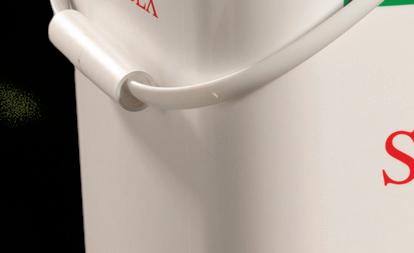
4 minute read
The Disease Disruptor
by agweek
WhereEconomics Meet
Solution forCercospora
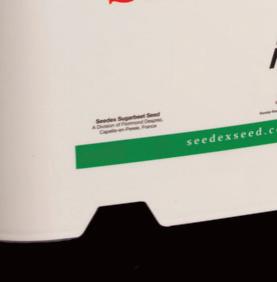

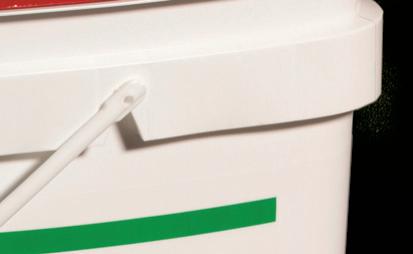
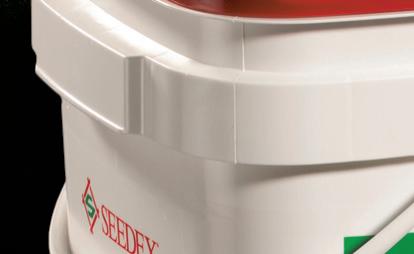

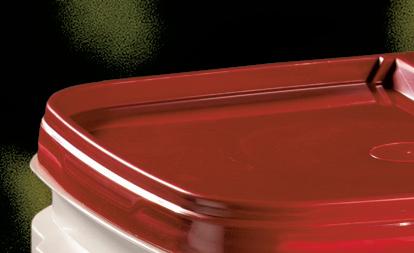


More Where It Matters
These days who doesn’t want more? More bang for your buck. More time for what matters most. Seedex Sugarbeet Seed provides the top genetics with time-tested traits to help you get more out of your fields. It’s our way of helping make things just a little more sweet. seedexseed.com | #hellosugar which would have complicated harvest operations even further.”


Sugar content was at 18.18%, and Griffin called the 2021 results “another great crop.”
Michigan Sugar
Harvest of Michigan Sugar’s more than 160,000 acres in Michigan and Ontario was projected to wrap up around Thanksgiving, later than the typical ending point of Nov. 10 due to adverse weather conditions. As of Nov. 7, sugarbeet harvest in Michigan was 80% complete, according to the USDA’s Crop Progress report.
The season started out difficult, with around 35,000 acres having to be replanted due to frost. However, the region received consistent rainfall and no more curveballs. And though harvest has been slower than normal, the overall yield has been nothing short of solid.
“We got a record crop. North of 36 tons per acre,” said Jim Ruhlman, executive vice president of Michigan Sugar.
Michigan Sugar was projected to collect 5.4 million tons. The company is not as thrilled about the sugar content as about the yield, which has been about 16-17%, compared to a preferred 18%.
Michigan Sugar will be setting aside 5% of beets this harvest season.

“It’s the first time in recent history that we have done that,” Ruhlman said.
Sidney Sugars
Harvest was 94% complete as of Oct. 27, 2021, for Sidney Sugars, a wholly-owned subsidiary of American Crystal Sugar, with an expectation for completion by the end of October.
The Sidney, Montana, company’s slice campaign is expected to run through Feb. 5, 2022, and the processing campaign through Feb. 10, 2022, said general manager David Garland.
Yields on the 105 growers’ 31,000 acres averaged about 27.8 to 28 tons per acre, which is short of the 30-ton expectation. Sugar content is a respectable 18.4%.
Record-high days of 100-plus-degree temperatures took its toll, both in yield potential and reduced effectiveness of herbicides. Some producers may regret shutting off irrigation at the end of the season, thinking they would get typical 2-inch rains in late September. In hindsight, when those rains didn’t materialize, they probably lost some yield, said Duane Peters, Sidney Sugars’ agricultural manager.
Southern growing areas for the company received about 4 inches of rain in storms from Oct. 10 to 12, which probably added up to 1.5 tons per acre in yield. Drier northern areas had higher sugars, up to 20%.
Western Sugar
Western Sugar in early November wrapped up harvesting an average crop with good quality.
Western Sugar produces sugarbeets in Colorado, Nebraska, Montana, and Wyoming. The northern region, in Montana and northern Wyoming, wrapped up harvest in the first week of November, said Randall Jobman, vice president of agriculture for the northern region. Colorado growers also were done in the first week of the month, while Nebraska growers were expected to finish harvest by Nov. 9, said Jerry Darnell, vice president of agriculture for the southern region.
After some heat shutdowns to start harvest, the beets came in “relatively cool,” and there were no precipitation delays to slow things down.
Yield was 31 tons per acre, with sugar at 19%. Avison said the crop benefited from long days in September without a killing frost, which kept them accumulating sugar.
Spreckels Sugar
Growers dealt with hot, dry conditions throughout the region, but irrigation water was sufficient for the needs of the crop, Darnell and Jobman said.
The last several years have had harvest challenges, Jobman said, but this year had the best weather in years. Darnell said there were no frozen beets to contend with this season.
In Colorado, yields were about 33.5 tons per acre and 17.54% sugar. In Nebraska, yields were 31.5 tons per acre and 17.76% sugar. In Montana, yields were 31.5 tons and 18.2% sugar. In Wyoming, yields were about 26.2 tons per acre and 18.5% sugar.
Darnell said the company hopes to wrap up processing in March.
Rogers
Rogers Sugar usually finishes harvest at the end of October or beginning of November, so the Alberta-based company’s Oct. 22, 2021, finish was one to remember.

“It was one of the best harvests in my 31 years here,” said Bryan Avison, agricultural superintendent for the company.
Like the northern tier states of the U.S., Alberta had a hot, dry summer. But Rogers’ growers are 100% under irrigation.
“The beet crop fared good,” Avison said. “They like heat and sunshine and water, so it worked out good.”
Growers for Spreckels Sugar Company, a wholly-owned subsidiary of Southern Minnesota Beet Sugar Cooperative, plant in the fall and harvest in the spring and summer.
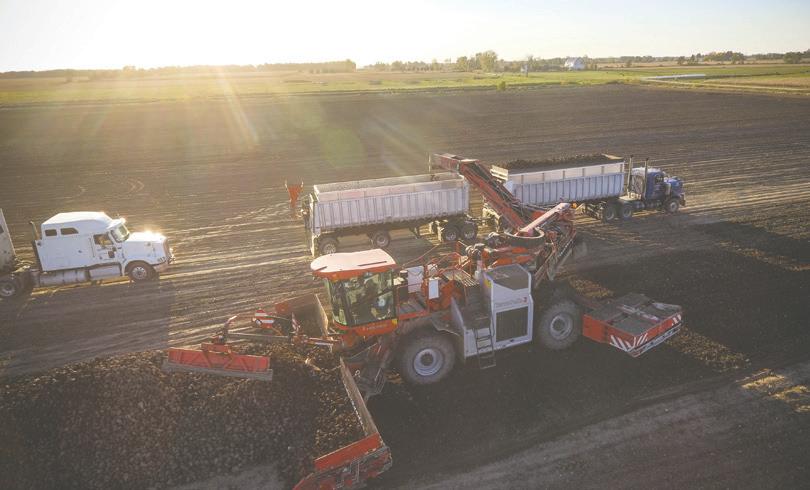
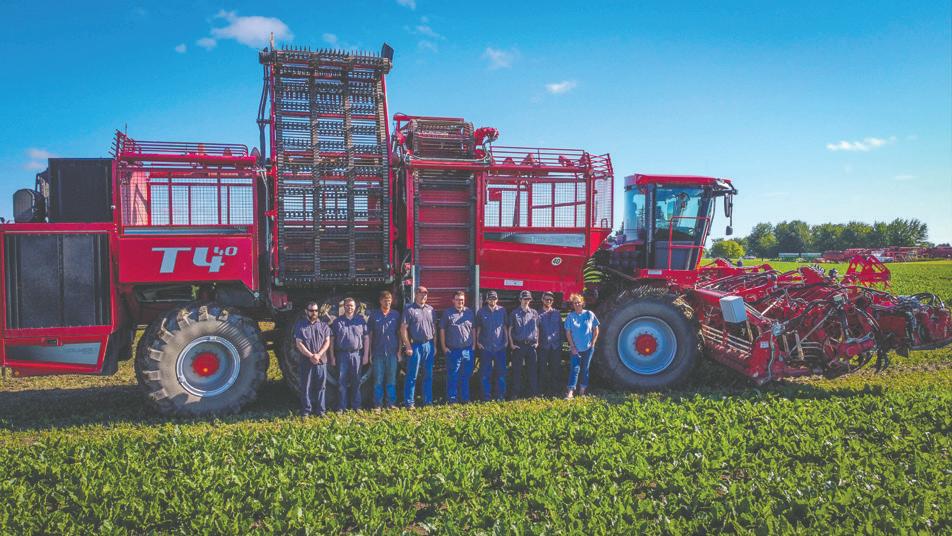
Shelby Drye, agriculture manager for the company, said planting began around Sept. 8, 2021, for the crop to be harvested in 2022. Planting proceeded with few problems, though some growers will have some replants, mostly due to salt in fields, he said.

Spreckels Sugar in August wrapped up harvest on the 2020-21 crop. The crop was planted on 24,024 acres. Of that, 2,316 had to be replanted due to a seed variety not performing well.
Despite the replants, the crop came out well, with 46.61 tons per acre, 16.93% sugar content and 88.59% purity. Drye said 648 acres had to be abandoned due to high temperatures in the spring rotting beets in the fields.
Because of irrigation, the pervasive drought on the West Coast hasn’t been overly burdensome for growers, Drye said. However, there are concerns about future water shortages.
Wyoming Sugar
Wyoming Sugar expected to wrap up harvest on Nov. 8, a date delayed by late season rains.
Kadan Huber, agriculturalist for the company with grower-owners in Washakie, Big Horn and Fremont counties in Wyoming, said weather turned wet heading into harvest, and the bentonite in the soil “slicks up and causes problems really quick,” he said.
But a string of good weather at the end of October and early November meant growers were nearly wrapped up by Nov. 5. The company had estimated yield at about 31 tons per acre, but Huber figured that number would end up being about 32. Sugar content was just over 19%.
Planting on the company’s 11,980 acres began on Easter, and despite cold temperatures, only two fields had to be replanted. After what was initially a cold spring, the weather turned abnormally hot, and the region also had to contend with smoke from wildfires.
The company’s acres are 100% under irrigation. Despite concerns for Fremont County growers that water could be limited, all needs were met, Huber said.









